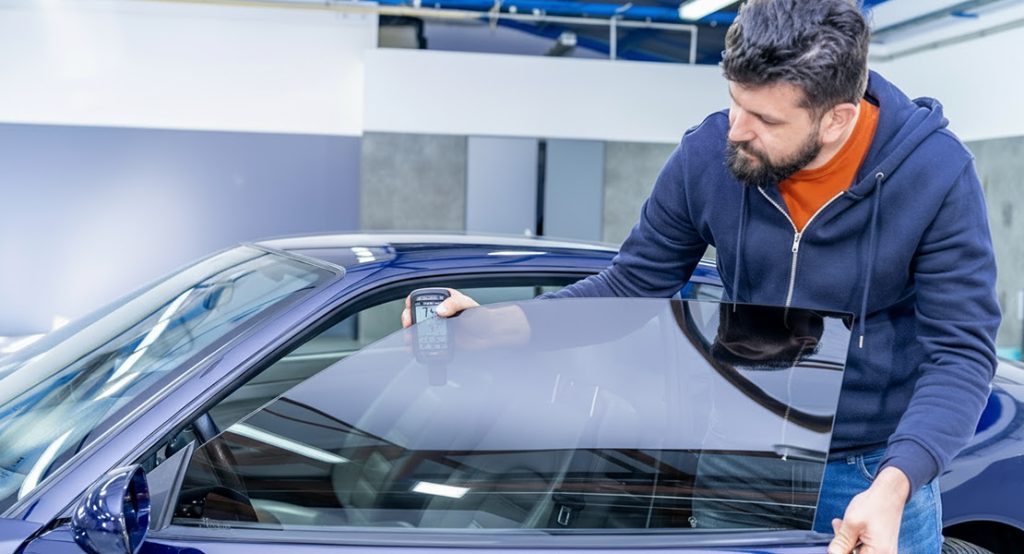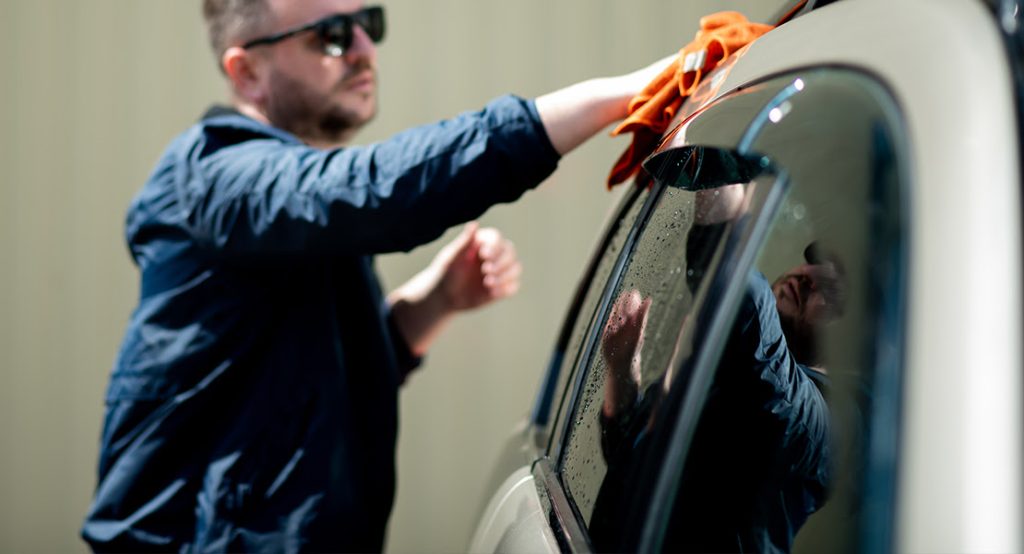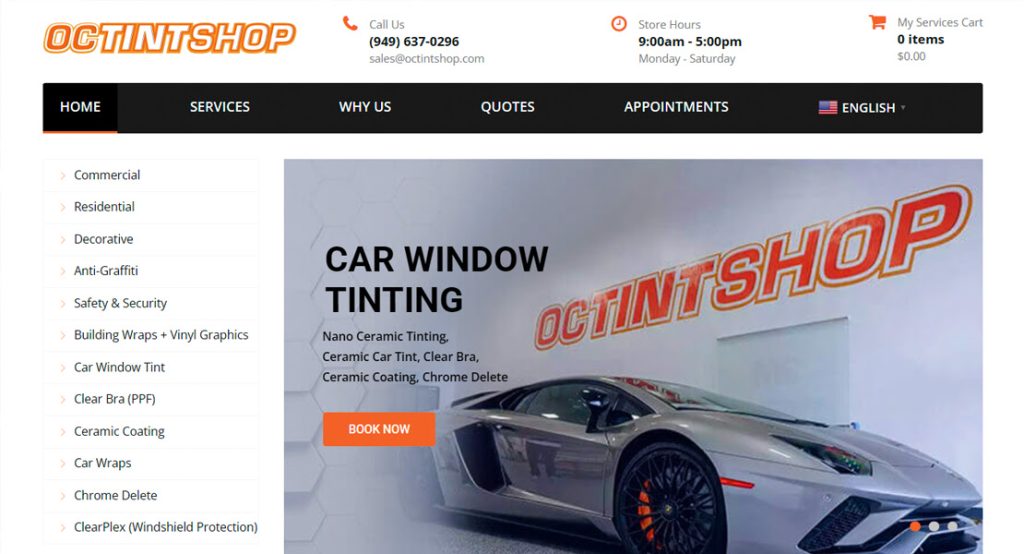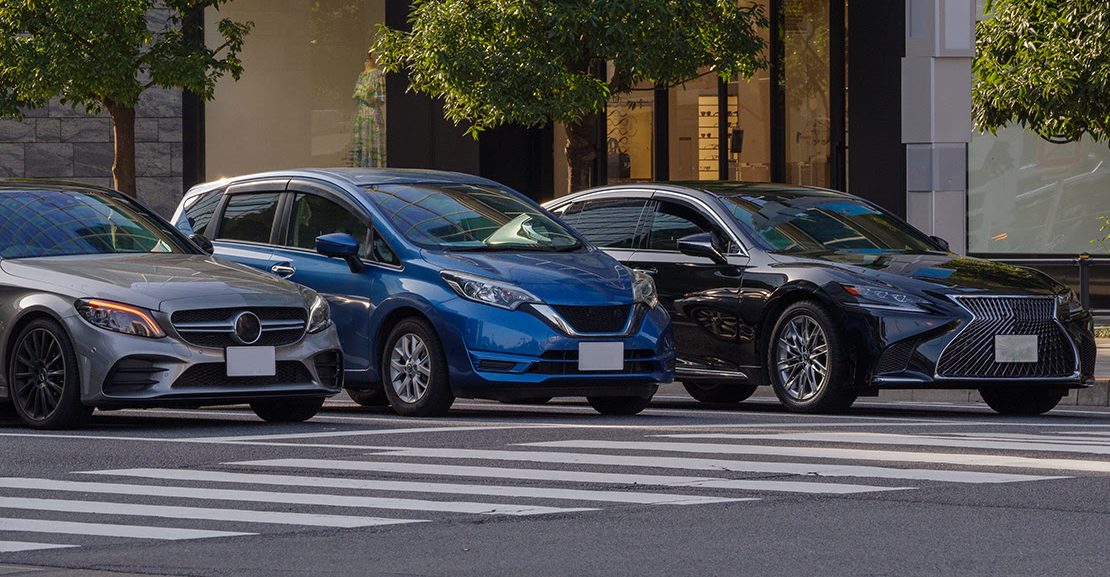Every year, thousands of California drivers wind up with window tint violations during traffic stops. Plenty of them believe that their tint is legal – maybe a professional shop installed it, or they’ve been driving around for months without any problems. Then one day they get stopped and the officer’s tint meter shows that their windows are actually over the legal limit. Plenty of other drivers stay away from window tint altogether because California’s tint laws seem either impossibly strict or just way too confusing.
Vehicle Code Section 26708 sets the limits on window tinting in California, and these limits are designed to balance driver safety with protection from our harsh sun. The police will check your tint during normal traffic stops, and they’ll sometimes run targeted enforcement operations where they’re specifically looking for tinting violations. When an officer tests your front windows with their meter and it reads below the 70% VLT threshold, you’ll get a ticket right then and there. What the installer told you or what the product packaging said won’t change anything.
Tint violations are going to cost you money that you didn’t need to spend, and they create plenty of avoidable stress. Drivers all over the state pay hundreds of dollars in fines and removal fees every day just because they got their first installation wrong!
Different Tint Rules for Each Window
California sets different tinting laws for each window on your vehicle, and they all have their own limits that you’ll need to follow. The windshield is where many drivers start. You can apply tint to a strip along the very top. But that strip can’t come down more than 4 inches from the top edge. 4 inches is roughly the width of your hand if you lay it flat, and should give you a decent idea of what you have to work with. This coverage protects you from the sun, and it won’t block your view of the road ahead.
The front side windows are where the laws get much stricter. The driver and passenger windows have to let at least 70% of light pass through. This means your tint can only block about 30% of what comes in. These windows need to stay mostly see-through for a couple of reasons – police need to see inside your vehicle during traffic stops, and you also need solid visibility to check your mirrors and to spot hazards around you.

The back windows are a different story altogether. Rear side windows and the back windshield can be tinted as dark as you’d like – California doesn’t restrict darkness levels for these areas. Just remember that if you tint the back really dark, you’ll need side mirrors on each side. The two mirrors are mandatory at that point since you won’t be able to see through a heavily tinted rear window.
These laws are there because lawmakers had to balance two competing needs that didn’t work well together. Drivers wanted relief from the sun and the heat during those brutal summer months. Law enforcement needed solid visibility and safe conditions for everyone on the road. What we ended up with is the strict limits for the front windows, but much more flexibility for the back of the vehicle.
Plenty of newer cars have factory tint already installed on the windows. That factory tint counts toward your total darkness limit and makes matters a bit harder when you plan what to add. If your windows already have some tint from the manufacturer, you have less room to work with for the aftermarket film before you go over the legal limit and get a ticket.
How VLT Numbers Work
California measures window tint with a metric called Visible Light Transmission, or VLT for short. This percentage tells you how much light passes through your windows after the tint has been applied. Anytime you see a VLT number, that’s the total amount of light that makes it through to the other side.
VLT ratings confuse plenty of car owners because the numbers work backwards from what seems logical. With a 70% VLT rating, 70% of visible light passes through the glass, not that it blocks 70%. The packaging on the tint film might say that it blocks a certain percentage of light. But law enforcement doesn’t measure what the film does by itself. They measure the total amount of light that passes through after the film is applied to the window.
Professional tint shops make this same mistake from time to time. A customer can walk in, ask for a certain percentage and leave with windows that aren’t even legal in their state. This happens when the shop measures just the film by itself instead of checking what the final tint level is after it’s been applied to the glass.

Police officers use tint meters when they pull you over for a window tint violation. The meter itself measures how much light is actually passing through your window at the time of the traffic stop. That percentage number printed on your tint film box doesn’t mean much to the meter or to the officer reading it.
Factory-tinted windows already block some of the incoming light, and that’s before any aftermarket film even touches the glass. When you layer aftermarket tint over factory tint, the effect compounds – the darkness multiplies instead of just adding together like basic math would say. The combination of the two layers can push car owners well past what California law permits.
Plain automotive glass on its own only lets about 90% of light through – not the full 100% you’d assume. Before any tint film gets applied to your windows, the baseline already sits at 90%. Once window tint gets layered on top of the existing glass, the light transmission drops even more from that already-lower starting point.
California does allow drivers to have darker tints when they actually need them for medical reasons. Medical exemptions are available for these cases, and they work a bit differently than the standard requirements that most drivers have to follow.
How to Get Medical Exemptions
California does have a medical exemption available if you need darker window tint than the standard legal limits allow. If your skin is extremely sensitive to light because of a medical condition, you can apply for this exemption and maybe get it approved. The medical conditions most likely to get approved are lupus, melanoma, photosensitivity disorders and other skin-related conditions where you need more protection from UV exposure.
To get this exemption, you’ll need to visit a licensed physician in California who can check out your situation and see if you actually qualify. Your doctor has to write up an official certificate that outlines your medical condition and explains why you need the extra protection that darker window tint gives you. The certificate has to include some information about your diagnosis and the medical reason behind the tint recommendation. One point to remember here – the doctor has to be licensed in California. A physician from another state won’t work for this type of application.

Once you get your medical certificate, you should have it in your vehicle at all times. Police officers can still pull you over if your windows appear darker compared to what’s normally allowed in your state. The medical exemption has the legal right to have darker tint on your vehicle. But it’s not going to stop cops from stopping you to check your paperwork. Officers can ask to see your medical certificate when they pull you over, and it happens quite a bit.
Medical certificates for window tint exemptions won’t last forever. Your doctor will decide when you need to renew yours, and most of them recommend renewal every couple of years or so. Medical conditions can change over time, and that’s why these renewal requirements are in place. Having valid and current documentation protects you from tickets and fines, and it gives law enforcement a way to verify that your darker tint qualifies as a legal medical exemption.
How Officers Make Traffic Stop Choices
The meter gets placed right up against your window to take a reading. Police officers are checking to see if your front side windows fall below that 70% legal threshold. The measurement process takes about a minute or 2 at most. Just remember that tint violations make for a pretty convenient reason to pull you over, and once an officer has you stopped, they can discover other vehicle or driver problems during that stop.
Police departments will sometimes make window tint a priority during traffic safety campaigns. This tends to happen in areas with lots of modified vehicles on the road. Enforcement varies based on where you live and which officer happens to pull you over. A few departments are pretty strict about tint laws and will ticket every violation that they come across. But plenty of others don’t pay much attention to it at all.

Something you can try is to roll your windows down a bit before the officer walks over to your car. Sometimes they’ll skip the tint check when your windows are already down. This doesn’t work every time, though plenty of drivers have managed to skip the measurement this way.
Once the officer has the information that they need from you, it’s up to them. Maybe they’ll let you off with a warning and send you on your way. Or they’ll write you a citation, and that will mean fines, points on your license and a long list of other problems. Whatever they choose right then will shape how the rest of your day plays out.
How to Handle Your Tint Ticket
A window tint violation in California doesn’t add any points to your driving record, and that’s a relief if you’ve been worried about that. California treats window tint violations as fix-it tickets instead of moving violations. This matters quite a bit for your wallet in the long run, mainly because your insurance rates will stay right where they are.
The base fine is $25, and it seems pretty fair. California tacks on a few different fees and assessments to that amount, though, and the total comes out to around $197.
A tint violation is pretty simple to fix. The illegal tint has to come off your windows – there’s no way around it. After it’s been removed, bring your car to either a law enforcement station or a licensed inspection facility. They’ll make sure that the tint has been removed (or adjusted to fall within legal limits). When you have that documentation, take it to the court that’s printed on your citation.

Getting your first window tint ticket means you might get the fine dropped completely. Most courts do this for first-timers. But they don’t always bring it up as an option. It’s worth asking about this when you call or when you show up there to take care of it.
Repeat offenders will face something a bit different. Multiple window tint tickets can turn into equipment violations, and the fines for those are way steeper. California tracks all these tickets in its system, even though they don’t add points to your license. Some drivers just leave the illegal tint anyway and pay whatever fines they get during traffic stops because they think it might save them money. The fines will add up fast, though.
At least now you’ll know what the financial side looks like, and you’ll know how to handle it if a citation ends up on your windshield.
What People Get Wrong About Tint
One big mistake with window tint comes from uncertainty about how the percentages work. When a shop employee mentions “70% tint,” most customers believe that means darker film. What the number represents is the VLT, and it tells you how much light passes through. A 70% VLT film lets 70% of the light through – it doesn’t block 70% of it. The mix-up happens all the time, and it causes real problems for drivers who don’t know better. Plenty of customers leave the shop with a 30% VLT film on their windows because they assumed it was legal, and then find out later that their windows are way too dark and illegal.

Police can pull you over just for window tint in California. Officers can stop you if your windows appear darker compared to what the state law permits, and that alone is plenty of justification. They don’t need to catch you speeding or see a broken taillight first – the tint itself gives them a valid reason for the stop.
California’s tint laws apply to drivers with out-of-state plates. The laws actually apply to every vehicle on California roads, no matter where that vehicle happens to be registered. A similar uncertainty comes up with ceramic films or transparent tint products that look lighter or more advanced. Any film that blocks the light still counts against the legal darkness limits when the marketing tries to make it sound invisible or very high-tech.
It’s also pretty risky to just trust what a tint shop tells you about their product being California-compliant. You should always double-check the VLT numbers yourself before they install anything. Another common mistake is removing the tint from just the driver’s side window – that doesn’t fix the problem. Your front side windows have to be at 70% VLT to stay legal.
Transform Your View with Professional Tinting
Legal tint helps you feel confident. Those flashing lights in your rearview mirror are way less stressful if you already know your windows aren’t going to land you with a fine or turn into an awkward roadside talk with a police officer. You get everything that window film can do for you, and you won’t have to doubt yourself every time you drive past a cop.

A quality installation matters if you want to be comfortable and legal at the same time. OC Tint Shop has been working with Orange County drivers for years to help them find the right balance between cool interiors and the limits that actually make sense for their vehicle. We’ve helped thousands of customers from Irvine to Huntington Beach who wanted better heat reduction and UV protection from their window tint, but who also didn’t want to worry every time they saw a patrol car behind them. Our team knows Vehicle Code Section 26708 inside and out, and we know how to give you as much comfort as possible as we make sure everything stays legal. For tint that looks great and won’t cause you any problems, call us for a free consultation, and we can go over an installation that protects your car and meets California limits.

